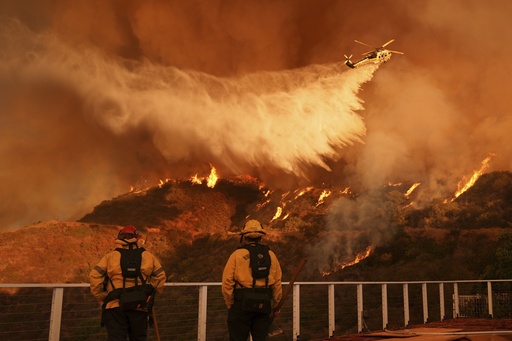
LOUISVILLE, Colorado —
Recent wildfires across the United States— including devastating events in Santa Rosa, Paradise, and Boulder County— have highlighted the inadequacies of urban water systems in combating such disasters, according to experts. When fires rage, hydrants often struggle to provide sufficient water, while many treatment plants and pumps face outages. In some cases, hazardous chemicals are drawn into the water supply, complicating restoration efforts. For instance, in Paradise, California, the aftermath of the 2018 Camp Fire, which claimed over 85 lives and destroyed more than 18,000 structures, left the local water system in dire need of reconstruction, projected to cost $125 million and take over three years to complete.
With the increasing frequency and severity of wildfires due to climate change posing a rising risk to urban areas, water utilities are beginning to recognize the need for resilient infrastructure. “People are starting to ask some of these same questions that people asked decades ago for hurricanes and earthquakes,” said Greg Hentschel, who is the vice president of engineering at CST Industries. He emphasized the importance of implementing building codes and engineering standards to bolster urban resilience against these catastrophic events.
Improving water infrastructure alone won’t entirely shield communities from fire danger; many improvements can be financially burdensome. However, experts note there are proactive steps communities can initiate.
One development gaining traction is the use of remote shutoff valves. These valves allow for the immediate cessation of water flow during a fire event, preventing the unnecessary depletion of resources before utility workers can safely reach the site. Louisville, Colorado, has implemented remote shutoff valves on rebuilt homes since the Marshall Fire destroyed over 500 residences in 2021. Kurt Kowar, the city’s public works and utilities director, stated that this method can prevent significant losses. While standard meters cost around $400, those with remote capabilities are approximately double that price and depend on cellular service, which could be disrupted during a fire. Nonetheless, Kowar advocates for proactive measures to minimize this risk.
Another innovative solution involves creating local emergency water sources, referred to as “heli-hydrants.” These systems consist of concrete tanks that can store thousands of gallons of water, allowing firefighting helicopters to replenish quickly without traveling long distances. An example of their efficacy emerged during the 2023 Garden Fire in San Diego County when a newly installed 5,000-gallon heli-hydrant was used nearly 30 times by firefighting aircraft. The Rainbow Municipal Water District invested around $200,000 in this project after experiencing significant property losses to the 2017 Lilac Fire. Additionally, commercial properties and larger residential complexes are encouraged to keep water on-site for firefighting purposes, but those installations can be costly, with estimates ranging from $100,000 to several million dollars depending on the specifics.
There’s also the possibility of establishing dedicated pipes specifically for firefighting needs. San Francisco has utilized such a system since the 1906 earthquake, which led to massive fires in the city. Today, it boasts a network of 135 miles of pipe linking a reservoir and two large tanks, specifically for major fires, supplemented by numerous backup underground cisterns capable of holding larger volumes and an ability to utilize seawater if necessary. While establishing similar systems might be cost-prohibitive for many localities, elements like underground cisterns and high-pressure lines could still be beneficial.
Reliability in energy supply is crucial for maintaining water systems, particularly in emergencies. Many critical facilities like treatment plants typically rely on electricity, which often fails during wildfires. Louisville experienced this during the Marshall Fire; generators powered by the local natural gas supply were shut off citywide for safety even though these outages significantly compromised water pressure. Currently, efforts are underway to convert their generators to diesel, ensuring a dependable energy source for several days.
Furthermore, the risk of chemical contamination escalating from wildfires necessitates attention. Burned materials can release toxic substances into the water supply, making standard filtration methods inadequate. To mitigate risks, experts suggest installing backflow prevention devices at water meters, which could help prevent contamination. Cities like Louisville and Paradise are incorporating such safety devices into their rebuilding plans. Concerns about damaged service lines, originating from heat, also signify a need for better protective measures, such as deep burial for pipes and fireproof enclosures for meter boxes.
A nationwide approach for adopting stricter building codes for water infrastructure could play a role in addressing these challenges. There may also be financial incentives available through insurance which encourages municipalities to adopt best practices in risk reduction, enhancing public safety and optimizing resource usage. According to Andrew Whelton, an engineering professor at Purdue University, while individual decisions can help mitigate risks, the pressing need for communal action underscores an evolving understanding of public infrastructure resilience.

